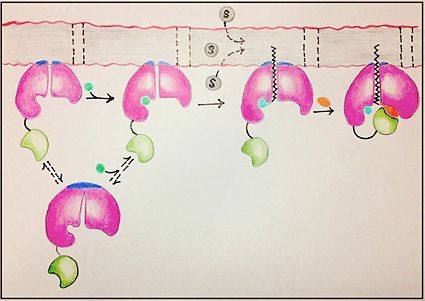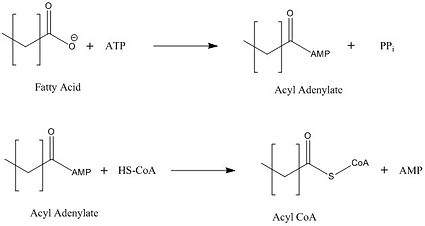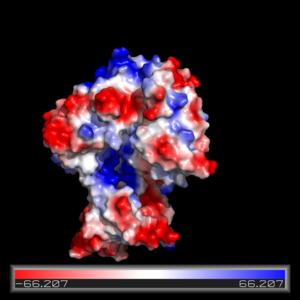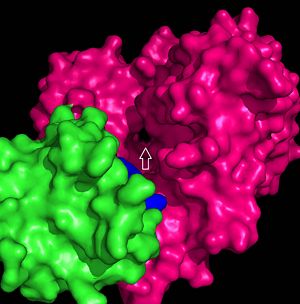Sandbox Reserved 1066
From Proteopedia
(Difference between revisions)
| Line 49: | Line 49: | ||
''Mycobacterium tuberculosis'' ''(M.tb)'' is the causative agent involved in the disease '''tuberculosis'''. Tuberculosis is a growing global health concern that has been intensified due to the increase in HIV infections along with the increase in multi-drug resistance strains of ''(M. tb)'' <ref name="molecular studies">PMID: 20454815</ref>. Most of the drug resistance has evolved due to the intensive nature of the treatment for tuberculosis, which often goes incomplete thus resulting in drug resistant strains; therefore, the importance in identifying characteristics and residues to be exploited for new drug targets is pivotal <ref name="molecular studies"/>. | ''Mycobacterium tuberculosis'' ''(M.tb)'' is the causative agent involved in the disease '''tuberculosis'''. Tuberculosis is a growing global health concern that has been intensified due to the increase in HIV infections along with the increase in multi-drug resistance strains of ''(M. tb)'' <ref name="molecular studies">PMID: 20454815</ref>. Most of the drug resistance has evolved due to the intensive nature of the treatment for tuberculosis, which often goes incomplete thus resulting in drug resistant strains; therefore, the importance in identifying characteristics and residues to be exploited for new drug targets is pivotal <ref name="molecular studies"/>. | ||
| - | The cell wall of ''(M. tb)'' is known to be composed and synthesized from a distinct variety of lipids, most notably mycolic acids, which are known to play a crucial role in the pathogenesis of ''(M. tb)'' <ref name="molecular studies"/> The mycolic acid biosynthetic pathway has been proposed to involve five distinct stages, the first of which is the synthesis of C20 to C26 straight-chain saturated fatty acids activated by FadD13. <ref name="Drug Inhibitors">PMID: 12164478</ref> | + | The cell wall of ''(M. tb)'' is known to be composed and synthesized from a distinct variety of lipids, most notably mycolic acids, which are known to play a crucial role in the pathogenesis of ''(M. tb)'' <ref name="molecular studies"/> The mycolic acid biosynthetic pathway has been proposed to involve five distinct stages, the first of which is the synthesis of C20 to C26 straight-chain saturated fatty acids activated by FadD13. <ref name="Drug Inhibitors">PMID: 12164478</ref> For this reason, current research has focused on inhibitors to disrupt the initiation of this biosynthetic pathway of mycolic acids in ''(M. tb)''. |
== Current Treatment == | == Current Treatment == | ||
Revision as of 13:58, 9 April 2015
| This Sandbox is Reserved from 02/09/2015, through 05/31/2016 for use in the course "CH462: Biochemistry 2" taught by Geoffrey C. Hoops at the Butler University. This reservation includes Sandbox Reserved 1051 through Sandbox Reserved 1080. |
To get started:
More help: Help:Editing |
Mycobacterium tuberculosis very-long-chain fatty acyl-CoA synthetase
| |||||||||||
References
- ↑ 1.0 1.1 1.2 1.3 1.4 1.5 1.6 1.7 1.8 Andersson CS, Lundgren CA, Magnusdottir A, Ge C, Wieslander A, Molina DM, Hogbom M. The Mycobacterium tuberculosis Very-Long-Chain Fatty Acyl-CoA Synthetase: Structural Basis for Housing Lipid Substrates Longer than the Enzyme. Structure. 2012 May 2. PMID:22560731 doi:10.1016/j.str.2012.03.012
- ↑ Jatana N, Jangid S, Khare G, Tyagi AK, Latha N. Molecular modeling studies of Fatty acyl-CoA synthetase (FadD13) from Mycobacterium tuberculosis--a potential target for the development of antitubercular drugs. J Mol Model. 2011 Feb;17(2):301-13. doi: 10.1007/s00894-010-0727-3. Epub 2010 May, 8. PMID:20454815 doi:http://dx.doi.org/10.1007/s00894-010-0727-3
- ↑ 3.0 3.1 3.2 3.3 3.4 3.5 Khare G, Gupta V, Gupta RK, Gupta R, Bhat R, Tyagi AK. Dissecting the role of critical residues and substrate preference of a Fatty Acyl-CoA Synthetase (FadD13) of Mycobacterium tuberculosis. PLoS One. 2009 Dec 21;4(12):e8387. doi: 10.1371/journal.pone.0008387. PMID:20027301 doi:10.1371/journal.pone.0008387
- ↑ 4.0 4.1 4.2 4.3 Jatana N, Jangid S, Khare G, Tyagi AK, Latha N. Molecular modeling studies of Fatty acyl-CoA synthetase (FadD13) from Mycobacterium tuberculosis--a potential target for the development of antitubercular drugs. J Mol Model. 2011 Feb;17(2):301-13. doi: 10.1007/s00894-010-0727-3. Epub 2010 May, 8. PMID:20454815 doi:http://dx.doi.org/10.1007/s00894-010-0727-3
- ↑ Schroeder EK, de Souza N, Santos DS, Blanchard JS, Basso LA. Drugs that inhibit mycolic acid biosynthesis in Mycobacterium tuberculosis. Curr Pharm Biotechnol. 2002 Sep;3(3):197-225. PMID:12164478
External Resources
Tuberculosis Wikipedia page
Mycobacterium tuberculosis Wikipedia page
Coenzyme A Wikipedia page
Acyl CoA Wikipedia Page
Mycolic Acid Wikipedia page




